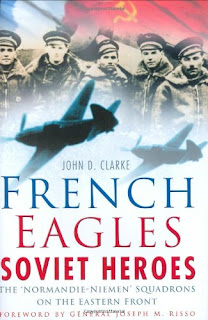Turkey and the eastern Mediterranean may seem a long way from the beaches of Normandy. Still, Allied operations involving Turkey were vital in keeping German troops away from northern France on D-Day.
By the end of 1943, the Germans, particularly Ribbentrop, were convinced that Turkey was not a genuine neutral. When Churchill flew to visit the Turkish President, the Adana conference strongly indicated this shift to Ribbentrop and subsequent spy reports of British troops on training and construction duties in Turkey. Britain built 38 airfields, including 15 all-weather fields near the Straits, using engineers and construction workers sent from the UK. Operation Hardihood was the British code name for support to Turkey in the form of British formations, military equipment and broader economic assistance. The equipment included 180 (50 more to follow) Valentine tanks, 222 Stuart light tanks, 25 Sherman medium tanks, 150 Dingo scout cars, 59 Bren carriers and 48 Bishop self-propelled guns. This allowed the Turkish Army to reorganise their armoured forces into three armoured brigades equipped with Allied armour facing the Balkans.
 |
| A 28mm Turkish Valentine from my collection |
Turkey also began to shift its diplomatic policy. Turkey agreed they would initially reduce shipments of Chromite (the main Turkish export to Germany) and then cancel them altogether. Turkey also agreed to half the export of other strategic commodities. Foreign Minister Menemencioğlu’s explanation to the Grand National Assembly for the policy shift was interesting. He said that Turkey’s alliance with Britain was the ‘nucleus and basis of our foreign policy’; therefore, Turkey was not neutral. They also stepped up inspections of German merchant ships using the Straits, confiscating war materials.
Churchill would have been happier if there had been an invasion of the Balkans instead of Normandy. However, largely thanks to the Americans, he had to settle for deception operations. Credible threats needed to be maintained to avoid German troops being withdrawn from the Balkans to reinforce the beaches of northern France. These threats were incorporated into the cover plan for Overlord called Operation Bodyguard.
The primary deception plan in the eastern Mediterranean was Operation Zeppelin. This involved developing invasion threats through Greece, Albania, Croatia, Turkey and Bulgaria. The sub-plan for an attack on Greece and Bulgaria was called Operation Turpitude.
Operation Royal Flush also supported Zeppelin by putting political pressure on Turkey to allow Allied forces to land in Thrace to attack Greece and Bulgaria. In a memorandum, the Air Ministry Director of Plans said, ‘The principle we have adopted is that if we can get a mission into the country with lots of brass hats and gold braid, the Turks and the Germans will feel that there really is something in the wind.’
The selection of objectives in the detailed plan for Operation Zeppelin is as thorough as many actual operations with an order of battle that included real and bogus units. This involved the notional British 12th Army based in the Middle East, supported by a breakout from Italy and Soviet advances into the Balkans. It included all the elements of a deception operation, including dummy units, radio traffic and intelligence agents. Operations were undertaken on a large scale, with thousands of troops involved in the latter stages, including 1000 signals personnel. It also included actual land and air raids, glider concentrations, reconnaissance flights and naval activity. Information leaflets and maps about Thrace were printed in English by selected printing presses in the Middle East, and a call went out to US forces for Turkish speakers.
 |
| An extract from the Operation Zeppelin deception plans (TNA) |
These deception operations led the Germans to overestimate the strength of the Allied troops in the region. They identified up to 71 divisions in early 1944 when, in reality, there were only 30 divisions. The German high command was not convinced the Allies would launch a major offensive in the Balkans, but they did believe there would be minor incursions. This meant they retained their units in the Balkans, including 430 aircraft and reinforced naval forces rather than shifting units to France, thus achieving the main goals of Operation Zeppelin.
You can read more about the deception plans in 1944 in my book 'Chasing the Soft Underbelly', published by Helion Books.









































